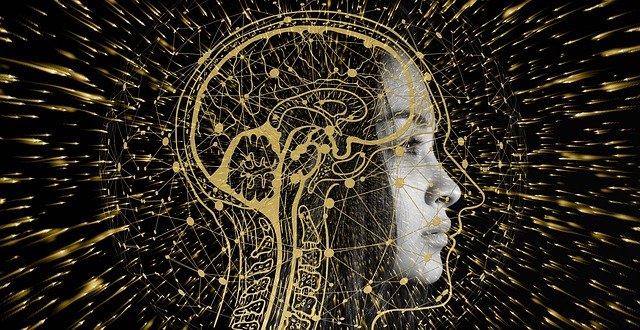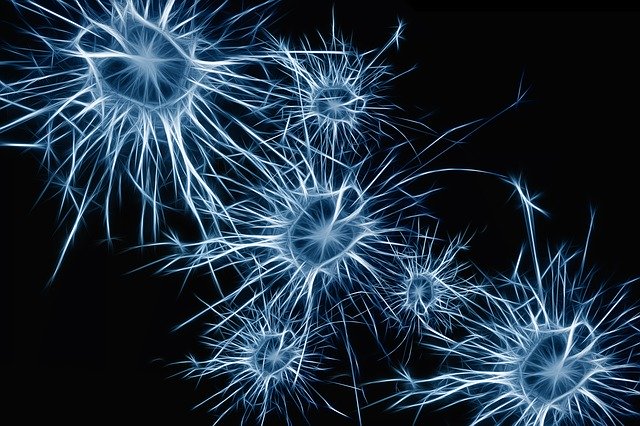Are You Experiencing Symptoms Of Mild Traumatic Brain Injury (mTBI)?
 Have you lost consciousness or felt dazed, disorientated, or confused as the result of an impact to or forceful motion of your head? Do you continue to have headaches, memory or concentration problems, sleep difficulties, or issues with your speech long after the incident? Are you experiencing sensory problems, such as a sensitivity to light or sound, ringing in your ears, bad taste in your mouth, blurred vision, or an incapacitation of smell?
Have you lost consciousness or felt dazed, disorientated, or confused as the result of an impact to or forceful motion of your head? Do you continue to have headaches, memory or concentration problems, sleep difficulties, or issues with your speech long after the incident? Are you experiencing sensory problems, such as a sensitivity to light or sound, ringing in your ears, bad taste in your mouth, blurred vision, or an incapacitation of smell?
Perhaps you often feel nauseated, fatigued, anxious, sad, or depressed, and you don’t know why. You may also have more trouble exercising self-control and are often irritable, impatient, or angry. Or maybe you experience difficulties carrying out executive functions that require utilizing your working memory or flexible thinking, which is needed for multitasking or managing complex situations.
The fact that you are different than you used to be or that you’re not at your full functionality anymore may have also impacted your relationship with your partner or children. Your brain may not be able to organize well when there’s too much activity around you, causing you to feel more quickly overwhelmed than other people or than you would have been before your injury. And so, everybody around you has to adjust to your new tolerance levels.
Perhaps you feel that nobody can stand having you around because of the way you have changed. And all you wish is that you could do what you used to do and be “normal” again.
You’re Not Alone In Your Struggle With Healing From mTBI
According to statistics from the National Center of Injury Prevention and Control, about two percent of Americans live with TBI-related disabilities. And the Center for Disease Control estimated that TBIs account for some 2.5 million emergency room visits and hospitalizations in 2010 alone.
Mild traumatic brain injury (also referred to as a concussion) is usually the result of a violent bump, blow, or jolt to the head which causes a loss of consciousness and/or confusion and disorientation for less than 30 minutes. The most common incidents causing mTBI are: falls (from the bed, a ladder, in the bath), vehicle accidents (whiplash), high-impact or extreme sports injuries (boxing, football, hockey, etc), violence (gunshot wounds, abuse, shaken baby syndrome, etc), and explosive blasts and shrapnel (specifically in active-duty military personnel).
Mild TBI can have a wide range of effects, both physically and psychologically. It may affect your brain cells temporarily or could result in long-term issues (15 percent of those with traumatic brain injury experience symptoms for a year or more3). And you may notice post-injury symptoms appearing immediately after the incident or not until days or weeks later.
Despite how seriously a high impact to the head can affect your brain, it is possible to improve after mTBI. Once all necessary medical investigations and interventions have been completed Neurofeedback (NF) therapy, in particular, can be an effective and invaluable treatment approach for optimising various aspects of cognitive attentional and emotional functioning after a mild traumatic brain injury.
Neurofeedback Can Speed Up Treatment for mTBI
Despite what many have believed for a long time, science has now discovered that the brain can heal itself—though, it takes time. In his book, The Brain That Changes Itself, Norman Doidge not only talks about the different conditions in which the brain is able to recuperate but also the various approaches that could help it to recover faster. One of the best tools for achieving this is Neurofeedback therapy.
 Perhaps you have had a round of Neurofeedback treatment before, but you didn’t experience the results you had hoped for. Keep in mind that there are various types and approaches of NF. In my practice, we utilize qEEG swLoRETA Neurofeedback, the most sophisticated brainwave measuring tool currently available, which enables a better localization and ability to address the communication/connectivity issues of various centers within your brain’s neural networks.
Perhaps you have had a round of Neurofeedback treatment before, but you didn’t experience the results you had hoped for. Keep in mind that there are various types and approaches of NF. In my practice, we utilize qEEG swLoRETA Neurofeedback, the most sophisticated brainwave measuring tool currently available, which enables a better localization and ability to address the communication/connectivity issues of various centers within your brain’s neural networks.
Our initial consultation will include an evaluation (a sequence of tests) and an in-depth discussion about the findings and the treatment approach that would be best for addressing your specific needs. I utilize both the Tomatis Method and Neurofeedback therapy in our work. However, for mild traumatic brain injury, we focus mainly on NF treatment, but at times a combination of the two approaches might work best depending on what type of trauma you have experienced. Whichever treatment plan we decide on, our main goal is always helping the different parts of your brain to communicate as quickly and effectively as they did before your injury occurred, whenever possible.
After we have discussed which approach(es) would be most suited to your needs, an analysis using qEEG swLoRETA Neurofeedback is the next step. Using this advanced tool, we can take an in-depth look at which networks of your brain we will need to work with specifically to create a training protocol that will target your unique goals. For example, you may want to work on improving your ability to concentrate, calming your anxiety, recovering some of the fine motor functions you have lost, easing your sensitivity to light and sound, or other goals you would like to achieve.
No matter how severely your mild traumatic brain injury has affected your daily functioning, Neurofeedback is a vital tool for treatment that can help accelerate your recovery from the effects of mTBI.
How Neurofeedback Therapy Works for mTBI
Neurofeedback therapy is an innovative and interactive way of treating brain injuries. During sessions, a device displays your brainwaves in real-time via an amplifier as visual and/or auditory feedback on a computer screen. This is a brain training tool that essentially helps you reprogram your brain’s networks to achieve your goals—whether that’s optimizing attention, calm, motor function, etc.
Throughout my career as a therapist, we have treated individuals who experienced a mild traumatic brain injury by using Tomatis Listening Training—a sound stimulation method that helps to improve decoding of spoken information, processing speed, attention, focus, verbal expression including gross and fine motor functions. After all, sensorimotor functions are some of the areas that are most often affected by brain injuries. However, since 2018, we’ve begun integrating qEEG swLoRETA Neurofeedback into our treatment protocol for mTBI because it can not only analyze neural networks in-depth but also bring about remarkable results for retraining the communication between specific brain structures after a traumatic injury.
Therefore, we now utilize NF therapy either as a sole treatment method for mild traumatic brain injury or in combination with the Tomatis Method. When we do work with NF alone, we complement the healing process with mindfulness training, relaxation techniques, and traditional counseling.
Perhaps you’re interested in trying Neurofeedback to treat your mTBI but you still have questions…
Isn’t TBI something a physician/neurologist has to treat? Why would I need to see a psychologist?
Individuals who have experienced mTBI typically are attended to by a team of experts, often led by a neurologist. While we are not the first-line treatment for mild traumatic brain injury (the neurologist is first, and sometimes, an emergency room investigation takes place), our role as mental health experts is to be part of the recovery approach after the diagnostic and immediate healing has taken place. To that end, we value collaborating with our clients’ prescribing physician and, if our client is a child, working with their parents.
Some of our clients come to us after they have tried many approaches, leading to some solid progress; however, more steps toward further recovery are often needed. Working with an experienced practitioner that uses qEEG swLoRETA Neurofeedback can make an even bigger impact and speed up the healing process.
What makes your treatment approach for mTBI different from that of other practitioners?
What makes us different is that we have more than one tool at our disposal, and we are able to assess which approach would be most suited or if a combination thereof would be a better option. We will also make further referrals to other experts if other approaches—such as osteopathic, functional, or naturopathic medicine—could be useful and have not been part of the recovery process thus far. Our continuous collaboration with these professionals gives us the advantage to design and re-evaluate the mTBI treatment plan based on the individual’s progress so they can get the best possible results from working with their brain’s plasticity.
I haven’t experienced any of the contributors to traumatic brain injury that you listed on this page, but I feel like you’re describing my symptoms. Is that possible?
There are other brain injuries that are not traumatic, such as Hashimoto’s encephalopathy or a stroke (a vascular accident, per se), which can impact the brain and cause symptoms similar to a TBI, although there was no impact to the head. These brain injuries often have similar presentations as mTBIs, and we can work with those as well using Neurofeedback or a combination of NF and Tomatis to help the brain recover.
You Can Heal From Mild Traumatic Brain Injury
If you’re ready to address the symptoms caused by a mild traumatic brain injury, improve your daily functioning, and heal your neural network, contact me today. Please call 206-522-8873 for a free, 30-minute phone consultation or contact us via email.
